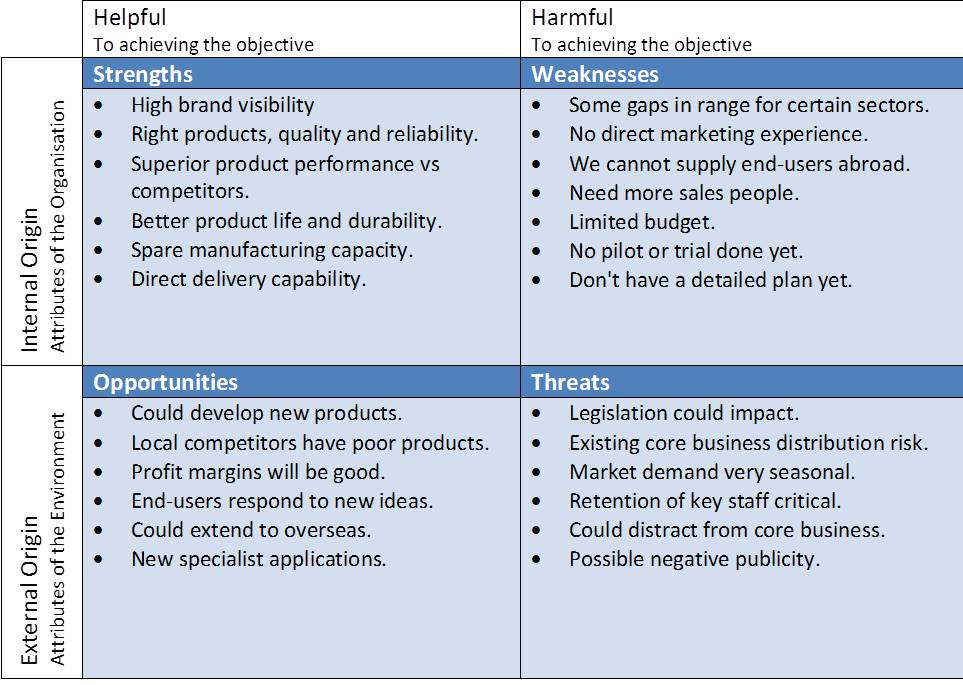Strategic Assessment. – Nine Steps to Success™
Strategic Assessment is the first step of the Balanced Scorecard Institutes framework for strategic planning and management, the Nine Steps to Success™. Before embarking on any strategic planning journey, it is essential to assess what is in place, conduct market research, look at the current economic conditions and develop or re-develop the highest level strategic foundations.
Learn how to manage your KPIs with Spider Impact
“Assessment is a structured way of exploring the forces, trends, opportunities and threats in the external environment and looking at how and how well the organisations products and services meet customer and other stakeholder needs” The Institute Way, Howard Rohm, et al.
Strategic assessment can be broken down into three major steps:
1. Review any existing strategic materials produced from all sources.
2. Conduct market research and examine current/future market/economic conditions.
3. Develop or re-develop the highest level strategic foundations.
1. Review Existing Materials
It is essential to recognise the work done in the past. Many people will have invested time and energy in previous strategies and often taken ownership. To keep these people engaged and motivated, their work must be recognised as important. Furthermore, there will almost certainly be strategies that need to be continued, objectives that have not been fulfilled and initiatives that need to be completed. These things must be reviewed and considered when revisiting a strategy. Start from where you are; do not reinvent the wheel.
If you have been disciplined in your strategic planning approach, this will be an easy task. Companies and organisations that already employ a strategic planning methodology like the Balanced Scorecard will have all the relevant information to hand. One of the keys to good strategic planning is to keep the strategy alive through continuous activity and monitoring.
A simple method often used to ensure all elements have been covered is conducting a strategy gap analysis. This is a list of all essential strategic objects; it may look something like this:
The table above should include all of the essential objects associated with the strategic planning process. It provides a snapshot of the current position and can quickly show how much work is required to reach a baseline position.
2. Conduct Research
Research should be conducted both Externally and Internally. The former should include a high-level view of economic, political, regulatory and demographic forces, specific changes occurring in related industries and markets and, of course, customer and stakeholder needs. The latter should include core competencies, strengths, weaknesses, capacity, culture, internal stakeholder’s needs, communication capability, and performance.
There are many ways in which research can be conducted, including interviews (highly recommended and underused; many company executives have been surprised by the knowledge contained within their staff when a structured methodology is used to extract it), surveys, SWOT analysis, Market/competitor studies, customer and supplier surveys. Below, we will concentrate on two industry-standard processes, SWOT and PESTLE, as examples of internal and external analysis that can be combined into a single final result.
SWOT (Strength, Weakness, Opportunity, Threat)
A SWOT analysis can be produced by conducting internal and external research as described above or as a workshop involving a strategic planning team. In many companies, a strategic planning team’s collective wisdom can be far greater than any amount of research conducted by external parties. The SWOT analysis aims to summarise an overall position in a single chart. The following are some of the things to be considered for each area:
Strengths:
– What advantages does the organisation have over others?
– What is likely to produce the greatest return on investment?
– What does the organisation do well?
– What would be the best thing to implement quickly?
– If we are not looking at a particular prominent area, why not?
Weaknesses
– What are the areas where we should and could do better?
– Which areas should we avoid altogether?
– What do our customers consistently complain about?
– What do our employees consistently complain about?
– Do we have any internal/external processes that are slow?
Opportunities
– What are the apparent opportunities we can see?
– What are the current exciting trends in the marketplace?
– What are the predicted long-term trends in the market and technology?
– Are there any social, lifestyle or population changes we can exploit?
– What is happening with our existing development programmes?
Threats
– What are the most significant external obstacles we face?
– What are our competitors doing?
– Are there any government/regulatory changes we need to note?
– Can we keep up with technological changes?
– How good is our relationship with our suppliers?
The result of this exercise should end up with a SWOT table that looks something like this:
It should be noted that the way Strengths, Weaknesses, Opportunities and Strengths are placed in the quadrant also gives rise to the ability to further analyse the groupings in terms of those that are helpful or enablers and those that are harmful or challenging.
PESTLE Analysis
PESTLE is a simple acronym used to provide the framework for an analysis of external factors. PESTLE is frequently used in combination with SWOT to provide a rounded picture. The questions asked for each element of the acronym might be:
Political – What are the key political drivers of relevance? Worldwide, regional and Government directives, funding council policies, national and local organisations’ requirements, and institutional policy.
Economic – What are the important economic factors? Funding mechanisms, streams, business and enterprise directives, internal funding models, budgetary restrictions, and income generation targets.
Social – What are the main social and cultural aspects? Social attitudes to education, particularly about government directives and employment opportunities. Also, general lifestyle changes, changes in populations, distributions and demographics and the impact of different mixes of cultures.
Technological – What are current technology imperatives, changes and innovations? Major current and emerging technologies relevant to teaching, research, administration or operations.
Legal – What is the current and impending legislation related to an organisation? Worldwide, European and national proposed and passed legislation.
Environmental – What are the environmental considerations, locally and further afield? Local, national and international environmental impacts, outcomes of political and social factors.
The aim of undertaking a PESTLE analysis is to discover the current external factors affecting an organization, identify the external factors that may change in the future, to exploit the changes or defend against them better than competitors would do. The outcome should be a better understanding of the overall picture surrounding the company or organisation.
3. Develop or re-develop the highest level strategic foundations.
At this point, the assessment should have provided enough information to make informed decisions on high-level strategic foundations. These will form the platform onto which the strategy will be built. The components of the highest-level strategic foundation are Mission, Vision and Core Values.
Mission and Vision
It is imperative to ensure clarity in both Mission and Vision statements. Firstly, they are different things and serve different purposes. They often become mixed up, are too long, use platitudes and jargon, and are wholly uninspiring. Mission and vision statements should be powerful signposts that provide clear and concise directions about the purpose and aspirations of a company or organisation. The definitions of each are:
A Mission statement articulates the purpose of the company or organisation, why it exists, what it does, and for whom. It should serve as an ongoing guide that articulates what the company or organisation is all about. The mission should focus on the here and now.
A Vision statement outlines the goals and aspirations for the future. It creates a picture of a specific medium to long-term target and should be as a source of inspiration.
Here are some good examples of Mission statements:
Google: “Organize the world’s information and make it universally accessible and useful.”
eBay: “At eBay, our mission is to provide a global online marketplace where practically anyone can trade practically anything, enabling economic opportunity around the world.”
Walt Disney: “We create happiness by providing the finest in entertainment
for people of all ages, everywhere.”
Amazon: “To build a place where people can find and discover anything they might want to buy online.”
And here are some excellent examples of Vision statements that are designed to inspire:
Save the Children: “Our vision is a world in which every child attains the right to survival, protection, development and participation.”
Salesforce.com: “The end of software.”
Susan G. Komen for the Cure: “A world without breast cancer.”
Microsoft (old): “A computer on every desk in every home.”
An excellent way to start the process of creating vision and mission statements is by asking the strategic planning group the following:
• For Mission: What is the core purpose of the organisation? What do we do, and for whom?
• For Vision: Where do we want to be in 5 or 10 years? What are our aspirations?
Core Values
The final stage of Step 1 Assessment is to define the company or organisation’s Core Values. These beliefs form the basis for decision-making and activities that occur in day-to-day situations. It is not unusual to see words like Integrity, Commitment, Compassion, Customer Satisfaction, Excellence, Teamwork, Accountability or Collaboration in this section. The important thing is to:
1. Ensure each word has a description that makes it specific to the organisation
2. There are no conflicts in the words used.
It should also be noted that it is not inconsistent to have words like ‘Profit’ in this section. Profits are required to create growth, opportunity, job security, etc. Having profitability as a core value is not bad, provided it is tempered by other core values that explain why it is essential.
In conclusion, a strategic assessment should not be a lengthy process. It will be revisited and refined over and over during the next steps of the strategic planning process. It is only essential to get it 80% correct. Do not spend weeks and weeks attempting to get it 85% or 87% right.
Assessment is the first step in a strategic planning journey that never stops. It does, however, set the foundation for the success of the rest of the cycle. The Nine Steps to Success™ is a strategic planning methodology created by the Balanced Scorecard Institute. For more information on how to be trained as a Balanced Scorecard Professional (BSP), visit our training pages on the website.




